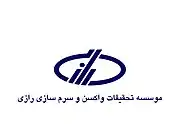 | |
| Type | Research institute |
|---|---|
| Founded | 1924 in Karaj, Iran |
| Founder | Mustafa Qoli Bayat |
| Headquarters | , Iran |
Production output | Human and Animal Medicines |
Number of employees | circa 2000 |
| Website | www |
The Razi Vaccine and Serum Research Institute (romanized: Mo'asseseh-ye Tahqiqât-e Vâksan va Seromsâzi-e Râzi) is an Iranian pharmaceutical and biological institute. It is located in the Hessarak district in Karaj, Iran. The institute was built as a national center with the purpose of countering epidemics in domestic animals during Reza Shah era. Further departments were installed, including those dedicated to human medicines. In modern years, the institute has focused primarily on nanomedicine and biotechnology.[1][2]
The institute is known for its anti-venom serums derived from snake and scorpion venom. It hosts some reference pharmaceutical laboratories with regional or state scopes.[1][2]
Branches
The institute has established regional branches in:
History

Production timeline
- 1924: Institution of the institute.
- 1932: Louis Delpy, a French veterinarian, drove the institute to overcome an epidemic of cattle plague in the region.
- 1933: Anthrax
- 1935: Sheep Pox
- 1936: Livestock Gangrene
- 1937: Cattle Pasteurellosis
- 1941: Serums and vaccines for diphtheria and tetanus
- 1970: Polio
- 1987: Rubella and Measles
- 1998: Aleppo Boil
- 1992: Foundation of the biotechnology department.
- 1997: Enhancement of the biotechnology department.
- 2010: The institute produced 1.7 billion doses of 57 types of vaccines, serums, and antigens per year.
- 2012: Production of transgenic animals, creating recombinant vaccines through genetic engineering, developing antigens and diagnostic kits for medical and veterinary labs.
- 2021: Razi Cov Pars: a COVID-19 vaccine[3][4][5]
Current research projects
- Creation of stem cell lines from mice fetuses through cloning
- Design and production of engineered skin tissue
- Molecular analysis of the CDS gene in cattle to diagnose genetic defects
- Production of hybrid cells
- Production of recombinant vaccines
- Production of a monoclonal antibody for measles
History points
- The facility was used as a Soviet military base during World War II
- NATO forces used some of the institute's anti-venom products during the Afghanistan war, since Afghan native snakes had not been researched in the USA or Europe.[6]
See also
References
- 1 2 "Iran | Countries | NTI".
- 1 2 Mahboudi, F; Hamedifar, H; Aghajani, H (2012). "Medical biotechnology trends and achievements in iran". Avicenna Journal of Medical Biotechnology. 4 (4): 200–5. PMC 3558225. PMID 23407888.
- ↑ Mehdi, Syed Zafar (7 February 2021). "Iran unveils second homegrown COVID-19 vaccine". Anadolu Agency. Retrieved 22 April 2021.
- ↑ "COVID-19 vaccine Razi Cov Pars starts third clinical trial phase". Tehran Times. 2021-08-27. Retrieved 2021-08-30.
- ↑ "Two homegrown vaccines receive emergency use license". Tehran Times. 2021-11-01. Retrieved 2021-11-27.
- ↑ Phillips, Michael M.; Fassihi, Farnaz (3 Dec 2012). "World News: Snake Tale: How Venom Binds U.S., Iran --- Despite Sanctions, Tehran Provides Treatment for Poisonous-Reptile Bites to Coalition Soldiers in Afghanistan". Wall Street Journal. No. Eastern Edition. Retrieved 6 March 2023.